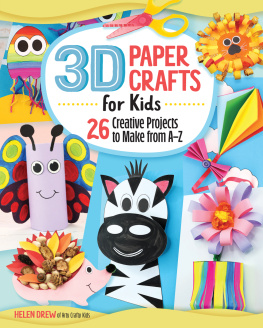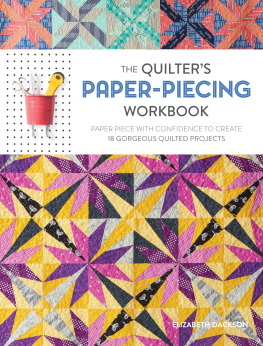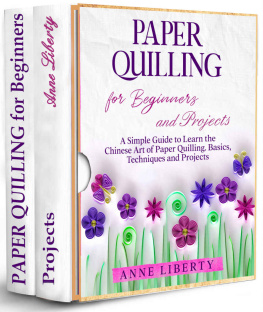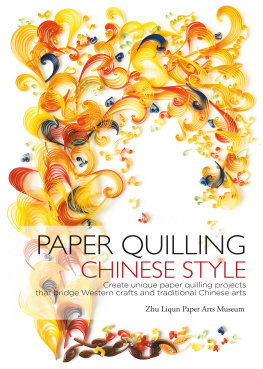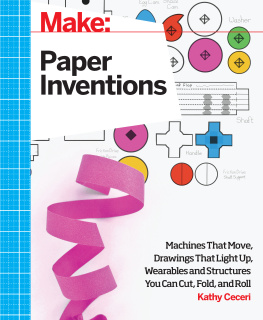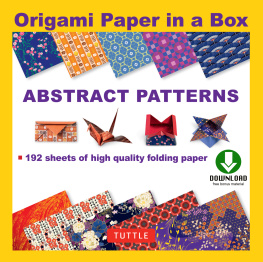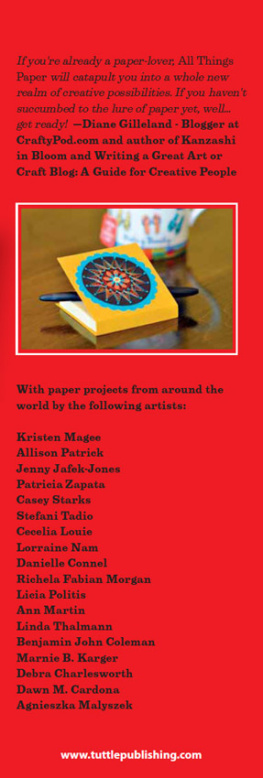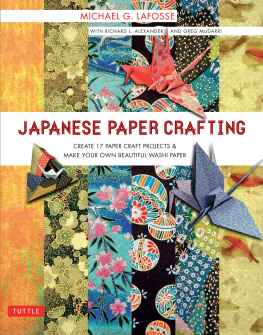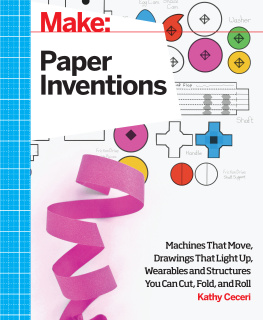THE ART OF
WEAVING
46 COLORFUL, DIMENSIONAL PROJECTS
ANNA SCHEPPER AND LENE SCHEPPER

ACKNOWLEDGMENTS
We would like to thank the readers of our blog, PaperMatrix, for comments and inspiration. We owe special thanks to Carol Parssinen who challenged us to make our first woven sphere.
Thank you to Betsy Gammons, Joy Aquilino, Heather Godin, Kathy Brock, and the entire Quarry team for fruitful and dedicated cooperation.
Thank you to Annette Juhl and Ellen Dahl (Tivoli, Copenhagen), Ren Mnster (Cirkus Baldoni), and Mikkel Knudsen (Cirkusmuseet), for thoughtful reviews and expedient response.
Thank you to our families and friends for their love and interest in the project. Special thanks to Nikolaj, partner of Anna, and Poul Erik, husband of Lene and father of Anna, for help and support.
2015 by Quarry Books
First published in the United States of America in 2015 by
Quarry Books, a member of
Quarto Publishing Group USA Inc.
100 Cummings Center
Suite 406-L
Beverly, Massachusetts 01915-6101
Telephone: (978) 282-9590
Fax: (978) 283-2742
www.quarrybooks.com
Visit www.craftside.net for a behind-the-scenes peek at our crafty world!
All rights reserved. No part of this book may be reproduced in any form without written permission of the copyright owners. All images in this book have been reproduced with the knowledge and prior consent of the artists concerned, and no responsibility is accepted by the producer, publisher, or printer for any infringement of copyright or otherwise, arising from the contents of this publication. Every effort has been made to ensure that credits accurately comply with information supplied. We apologize for any inaccuracies that may have occurred and will resolve inaccurate or missing information in a subsequent reprinting of the book.
10 9 8 7 6 5 4 3 2 1
Digital edition: 978-1-62788-316-0
Softcover edition: 978-1-63159-039-9
Library of Congress Cataloging-in-Publication Data
Schepper, Anna.
The art of paper weaving : 46 colorful, dimensional projects : includes practice paper & full-size templates / Anna Schepper & Lene Schepper. -- Digital edition.
pages cm
Includes bibliographical references and index.
1. Paper ribbon work. 2. Weaving. I. Schepper, Lene. II. Title.
TT850.5.S334 2015
746.14--dc23
2015000437
Design: Paul Burgess
All photography by Anna and Lene Schepper with the exception of (middle, right), Danish Cirkusmuseet. The Tivoli theme and the use of the images are in agreement with and approved by Tivoli, Copenhagen.
Access downloadable project templates at http://www.quarrybooks.com/pages/paper-weaving.
CONTENTS
PREFACE
Paper weaving is a thriving tradition in Denmark and Norway but is unknown in many other countries. In the United States, this magical craft, much loved by the Victorians, has passed into oblivion during the last 100 years. Anyone who has ever woven a paper heart understands its magic, when all of a sudden a beautiful geometrical object arises in front of you. Understanding this tradition and technique is a must for any paper lover. As essential as origami is for the Japanese, so too is paper weaving for the Danes.

We want to expose the tradition to a new generation of paper crafters and introduce its origin, but also reconstruct its geometries, further expand its possibilities, and harmonize with modern requests. The projects in this book represent our interpretations of several wondrous inspirations: exotic places, festive sceneries, and natural wonders. The objects can be used in daily lifeas a mobile for a baby crib or container for your favorite keepsakes. They can be featured in festive scenarios as decorations or just to induce a smile on everyones face.
Paper weaving is a craft that the whole family can participate in and enjoy. The different projects in The Art of Paper Weaving are created to allow easy accessibility for the beginner, but more challenges also await the skilled crafter. The expression practice makes perfect has never been truer when it comes to paper weaving. Our book contains a substantial collection of woven-paper projects, so we can introduce many techniques and tricks that are important to a novice paper weaver. It is essential to thoroughly read and understand the instructions before starting your paper project. We have strived to provide instructions as precisely as possible, and they might seem overwhelming at first, but be prepared: some models are time consuming and have a high level of difficulty.
We wish you all the best with your future paper projects and hope that you will find our favorite craft as fun and riveting as we do. Dont panic, keep a cool head, be patient, and enjoy yourself. It is just for fun.
Anna and Lene
A BRIEF HISTORY OF PAPER WEAVING
You may have seen a red-and-white woven-paper heart basket, a tradition so embedded in the Danish culture that schoolchildren are taught to make them. The woven hearts come in many shapes and sizes, but they all have two base colors neatly woven together to form the basket. In the mid-nineteenth century, Hans Christian Andersen, the famous author of the fairy tales The Little Mermaid, The Ugly Duckling, and many others, brought the concept of a woven paper heart home to Denmark from his travels in Europe.
A woven paper heart like one made by Hans Christian Andersen around 1860; the original is in the collection of the Hans Christian Andersen Museum in Odense, Denmark.
After such a magnificent introduction from their already internationally famous favorite son, the Danes came to love the woven heart, and it grew in popularity during the next fifty years. At the beginning of the twentieth century, the woven heart had reached the point of being an essential Danish tradition.
We have always been fascinated with this tradition. Devoted to create new patterns and matching colors and textures of all varieties, we set out to learn more about our favorite hobby.
We have traced the likely origin of woven-paper art to somewhere in the countries of Germany, Switzerland, and Austria. From there, the craft came to the United States with the immigrants in the early nineteenth century. In general, one could claim that the Germanic countries served as a melting pot of multiple ideas connecting and creating the woven-paper art form. Many varieties of this tradition are found today in folk-art museums and collections. Traditional woven paper objects fall into two categories: the woven heart basket and the heart and hand friendship and love token, the latter being a very popular art form in the Victorian age, particularly within the United States. Not just a pretty decoration, however, the paper objects had an intention: they were gifts or tokens of love for family, friends, and lovers. When one sees these woven-paper objects, it is not hard to imagine that the recipient would have been mesmerized by the intricacy, colors, and exquisiteness of these paper objects. Many were inscribed with verses, such as Hand and heart / Will never part / When this you see / Remember me. A German verse found on paper gloves mixes hand/finger and love/faithfulness as well: Auf Dise Finger Thun Ich Schrieben, Das Ich dir vill Tre ver Bleiben (Peesch 1983, 116), meaning, On these fingers writes he, that I will to thee forever faithful be.


